
Bertoleoni is the proclaimed ruling family of the styled "Kingdom of Tavolara", which claimed to be "the smallest kingdom of the world". The members of this family were also the only inhabitants of this island that had been abandoned in 1962. The island was claimed by Italy, however, it was never officially annexed and therefore this does not abolish any prior royal titles. The people of the island sustained themselves by goat farming and fishing. Currently, the supposed kingdom is a tourist attraction for the 57 or so native inhabitants of the island, where the current king and crown princess run its two restaurants and sell souvenirs to visitors of the Natural Park. The family has more influence over the island than anyone else.
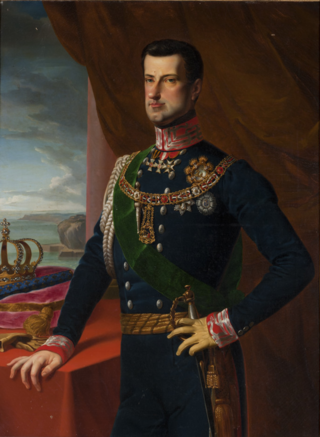
Charles Albert was the King of Sardinia and ruler of the Savoyard state from 27 April 1831 until his death in 1849. His name is bound up with the first Italian constitution, the Albertine Statute, and with the First Italian War of Independence (1848–1849).
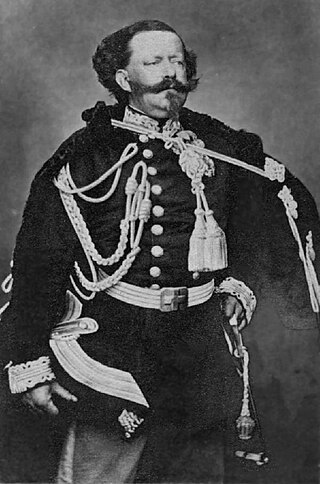
Victor Emmanuel II was King of Sardinia from 23 March 1849 until 17 March 1861, when he assumed the title of King of Italy and became the first king of an independent, united Italy since the 6th century, a title he held until his death in 1878. Borrowing from the old Latin title Pater Patriae of the Roman emperors, the Italians gave him the epithet of Father of the Fatherland.

The Kingdom of Tavolara is a purported micronation on Tavolara Island, off the northeast coast of Sardinia. Set up by the Bertoleoni family, allegedly sanctioned by Charles Albert, King of Sardinia, it claims to be one of the smallest kingdoms in the world.

Ferdinand II was King of the Two Sicilies from 1830 until his death in 1859.
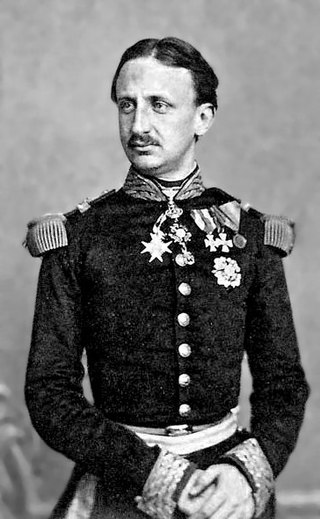
Francis II was King of the Two Sicilies from 1859 to 1861. He was the last King of the Two Sicilies, as successive invasions by Giuseppe Garibaldi and Victor Emmanuel II of Sardinia ultimately brought an end to his rule, as part of Italian unification. After he was deposed, the Kingdom of the Two Sicilies and the Kingdom of Sardinia were merged into the newly formed Kingdom of Italy.

Alberto Ferrero La Marmora was an Italian soldier and naturalist. He was elder brother to Alessandro Ferrero La Marmora, soldier and founder of the Bersaglieri, and to Alfonso Ferrero La Marmora, Italian general and statesman.
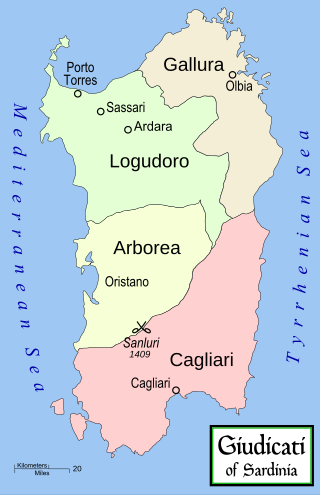
The Judicates, in English also referred to as Sardinian Kingdoms, Sardinian Judgedoms or Judicatures, were independent states that took power in Sardinia in the Middle Ages, between the ninth and fifteenth centuries. They were sovereign states with summa potestas, each with a ruler called judge, with the powers of a king.
Neo-Guelphism was a 19th-century Italian political movement, started by Vincenzo Gioberti, which wanted to unite Italy into a single kingdom with the Pope as its king. Despite little popular support, the movement raised interests among intellectuals, journalists and Catholic reformist politicians. They were also linked both to ontologism, a philosophical movement, and to rationalist-leaning theology.

The United Provinces of Central Italy, also known as the Confederation of Central Italy or General Government of Central Italy, was a short-lived military government established by the Kingdom of Piedmont-Sardinia. It was formed by a union of the former Grand Duchy of Tuscany, Duchy of Parma, Duchy of Modena, and the Papal Legations, after the Second Italian War of Independence.

The Order of Saints Maurice and Lazarus is a Roman Catholic dynastic order of knighthood bestowed by the royal House of Savoy. It is the second-oldest order of knighthood in the world, tracing its lineage to AD 1098, and it is one of the rare orders of knighthood recognized by papal bull, in this case by Pope Gregory XIII. In that bull, Pope Gregory XIII bestowed upon Emmanuel Philibert, Duke of Savoy and his Savoy successors, the right to confer this knighthood in perpetuity. The Grand Master is, Vittorio Emanuele, Prince of Naples, also known as the Duke of Savoy, the eldest son of the last King of Italy, Umberto II of Italy. However, Vittorio Emanuele's cousin once removed Prince Aimone, Duke of Aosta claims to be grand master as his father claimed to be head of the house of Savoy.

The Treaty of Paris of 15 May 1796 was a treaty between the French Republic and the Kingdom of Piedmont-Sardinia during the War of the First Coalition.

The Five Days of Milan was an insurrection and a major event in the Revolutionary Year of 1848 that started the First Italian War of Independence. On 18 March, a rebellion arose in the city of Milan which in five days of street fighting drove Marshal Radetzky and his Austrian soldiers from the city.
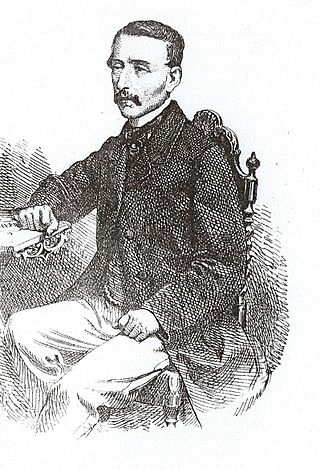
Carlo Ilarione Petitti count of Roreto was an Italian economist, academic, writer, counsellor of state, and senator of the Kingdom of Sardinia. He is seen as a prominent figure in the Italian Risorgimento.
The Civil Order of Savoy was founded as an order of knighthood in 1831 by the King of Sardinia, Charles Albert, Duke of Savoy. It is now replaced by the Order of Merit of Savoy.The intention was to reward those virtues not belonging to the existing Military Order of Savoy, founded by Vittorio Emanuele I in 1815. The order has one degree, that of Knight, and is limited to 70 members. Admission is in the personal gift of the head of the House of Savoy.

The Perfect Fusion was the 1847 act of the Savoyard king Charles Albert of Sardinia which abolished the administrative differences between the mainland states and the island of Sardinia within the Kingdom of Sardinia, in a fashion similar to the Nueva Planta decrees between the Crown of Castile and the realms of the Crown of Aragon between 1707 and 1716 and the Acts of Union between Great Britain and Ireland in 1800.

Sardinian nationalism or also Sardism is a social, cultural and political movement in Sardinia calling for the self-determination of the Sardinian people in a context of national devolution, further autonomy in Italy, or even outright independence from the latter. It also promotes the protection of the island's environment and the preservation of its cultural heritage.
Freemasonry in Italy dates to the first half of the eighteenth century. Its success largely depended on the lack of enthusiasm with which Papal bans on the order were enforced in the various states, but after the end of the Napoleonic regime, Freemasonry was suppressed in most of the peninsula. The start of the unification process in 1859 saw a revival in Freemasonry. Giuseppe Garibaldi, a leader of Italian unification, was an active Mason and a keen supporter of the craft. In the 1920s Freemasonry was again suppressed under Fascism but revived again after the fall of Benito Mussolini. Today's Italy contains a wide variety of Masonic observances, regular, liberal, male, female and mixed.

The cockade of Italy is the national ornament of Italy, obtained by folding a green, white and red ribbon into a plissé using the technique called plissage (pleating). It is one of the national symbols of Italy and is composed of the three colours of the Italian flag with the green in the centre, the white immediately outside and the red on the edge. The cockade, a revolutionary symbol, was the protagonist of the uprisings that characterized the Italian unification, being pinned on the jacket or on the hats in its tricolour form by many of the patriots of this period of Italian history. During which, the Italian Peninsula achieved its own national unity, culminating on 17 March 1861 with the proclamation of the Kingdom of Italy. On 14 June 1848, it replaced the azure cockade on the uniforms of some departments of the Royal Sardinian Army, while on 1 January 1948, with the birth of the Italian Republic, it took its place as a national ornament.

The proclamation of the Kingdom of Italy happened with a normative act of the Savoyard Kingdom of Sardinia — the law 17 March 1861, n. 4761 — with which Victor Emmanuel II assumed for himself and for his successors the title of King of Italy. 17 March is commemorated annually by the anniversary of the unification of Italy, a national holiday established in 1911 on the occasion of the 50th anniversary, and also celebrated, in the Republican era, in 1961 and 2011.





























